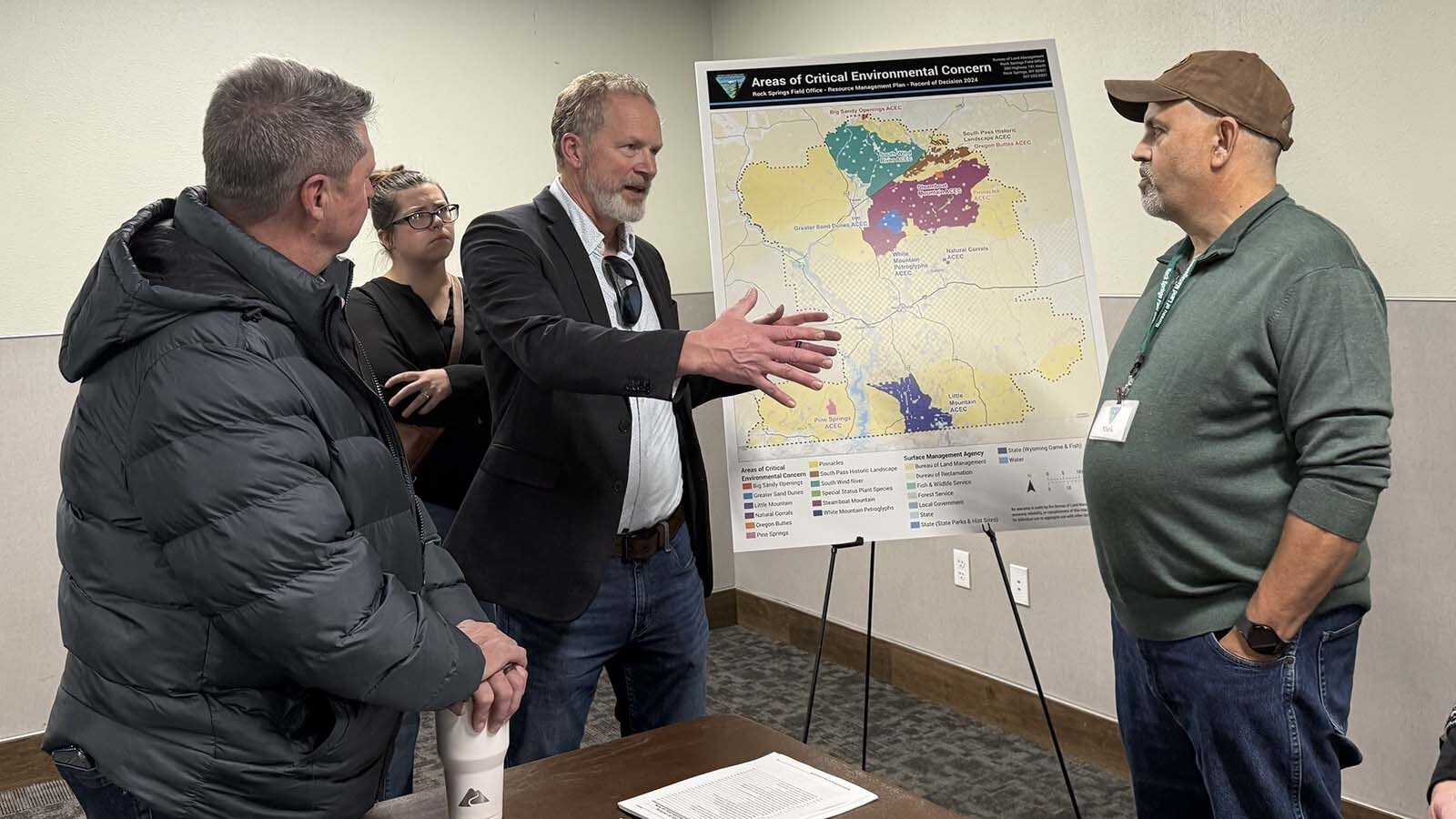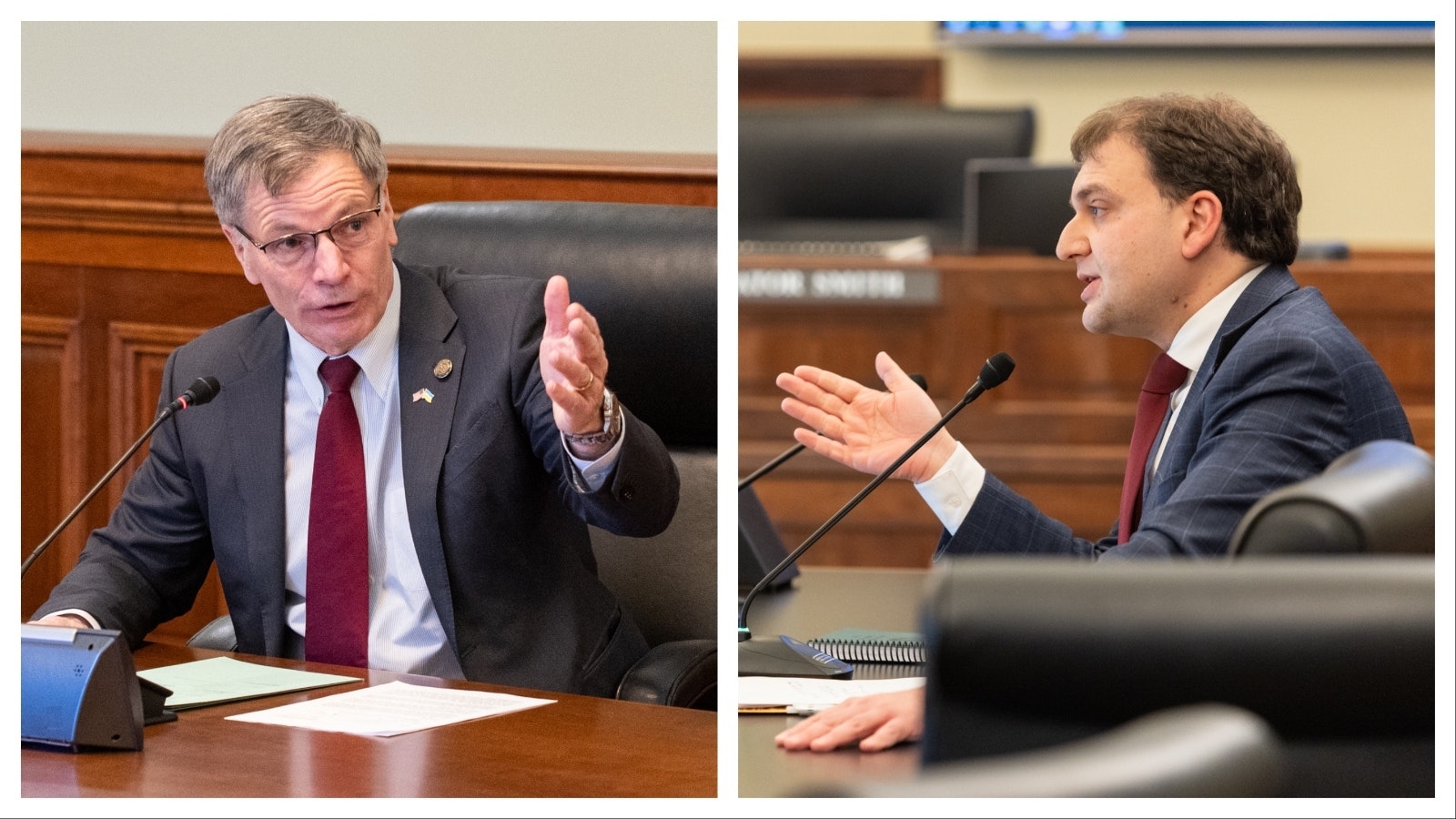With more than 4 million miles on the open road under his belt, 63-year-old Mark Sutherland, who heads one of Cheyenne's biggest and most successful trucking companies, has seen plenty from behind the windshield of his big rig, including devastating bridge strikes similar to one last week on Interstate 90 near Beulah.
Not one to mince words the owner of Sutherland Trucking is quick to point out that when such mishaps occur, costing the state millions of dollars in repairs and inconveniencing motorists, truckers are often unfairly blamed.
“Everything falls back on the truck driver,” he said Monday. “There is so much crap we have to put up with, and it's always our fault.”
Ultimately, drivers are responsible for ensuring their loads meet height requirements and can be safely transported beneath bridges, said Doug McGee, a spokesman for WYDOT.
“It is a driver’s responsibility to make sure there is clearance for their truck and load,” he said, adding that many strikes happen because drivers are inattentive to signage listing height restrictions. “When a bridge strike happens, it can affect traffic flow for people and cost transportation companies a great deal of money (for repairs).”
Bridge Strike
On the evening of Oct. 15, a low-boy truck and trailer carrying the mast of a forklift exceeded the posted clearance height of 15 feet 11 inches of the overpass at Beulah along I-90, damaging several girders and braces.
A preliminary inspection revealed that the damage compromised the integrity of the bridge, which will remain closed to traffic until WYDOT engineers complete a more detailed examination.
The name of the truck driver responsible for the bridge strike and the company they work for was not released.
The driver had obtained necessary permits to transport the oversized load beneath the bridge, according to WYDOT. The bridge strike is under investigation by the Wyoming Highway Patrol.
The maximum legal height for a load in Wyoming is 14 feet, said Luke Reiner, former executive director of WYDOT.
The mishap marks at least the second time that the Beulah bridge has been struck. In June, WYDOT completed a $1.9 million repair to the bridge from a 2023 strike.
There are an estimated 13,000 to 18,000 bridge strikes a year nationwide by tractor-trailers, according to the National Highway Traffic Safety Administration. Statistics for Wyoming were not immediately available.
But there are problem spots, like the McKinley Street Bridge in Casper, which has a very low clearance of 11 feet, 0 inches and has been hit by trucks multiple times.
The toll on drivers and trucking companies from bridge strikes can be huge.
Experts estimate that trailers valued at $20,000 are almost always damaged or destroyed and payloads are almost always lost. Additionally, drivers can be seriously injured or killed, and may lose their jobs and commercial driver’s licenses.
Trucking Challenges
Sutherland operates Sutherland Trucking with his son, Clint Sutherland, and said WYDOT contributes to some strikes by rerouting tractor-trailers along highways that can’t accommodate the height of some vehicles.
“It’s funny how the state can screw up and cause a wreck,” he said. “The problem is the state doesn’t want to be responsible: 'If you hit a bridge, you are liable for it.'”
Truckers also find challenges carrying loads outside of Wyoming. Clint Sutherland said he refuses to drive along Interstate 70 in Kansas because that state doesn’t post height signage on its bridges.
The Wyoming bridge that has been struck the most is on North Fork Road passing over I-25 near the town of Kaycee, which has been hit seven times since 1981, said McGee.
Many of the strikes were caused by trucks traveling in-state, which did not have to pass through one of Wyoming’s ports of entry and therefore were not measured, possibly making drivers unaware of height restrictions, he said.
Another notorious spot is the South Parsley Boulevard bridge over Interstate 80 in Cheyenne, which was struck in 2021 and 2022.
Luke Reiner, a former WYDOT executive director, said the state has an excellent bridge program that includes proper height signage.
“Regarding Bridge strikes, there are more than anyone wishes,” he said. "It is a responsibility of those who use the road to know the dimensions of their loads, understand the potential friction points, and plan their route accordingly.”
Scott Schwebke can be reached at scott@cowboystatedaily.com.












